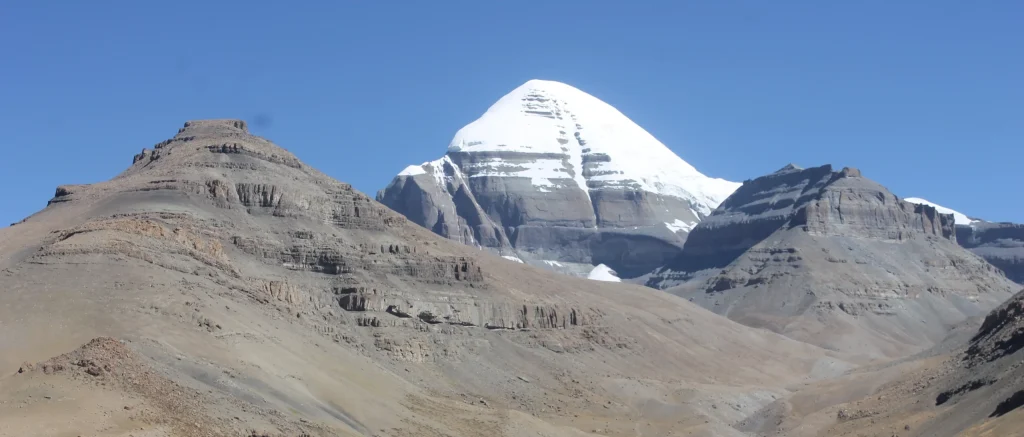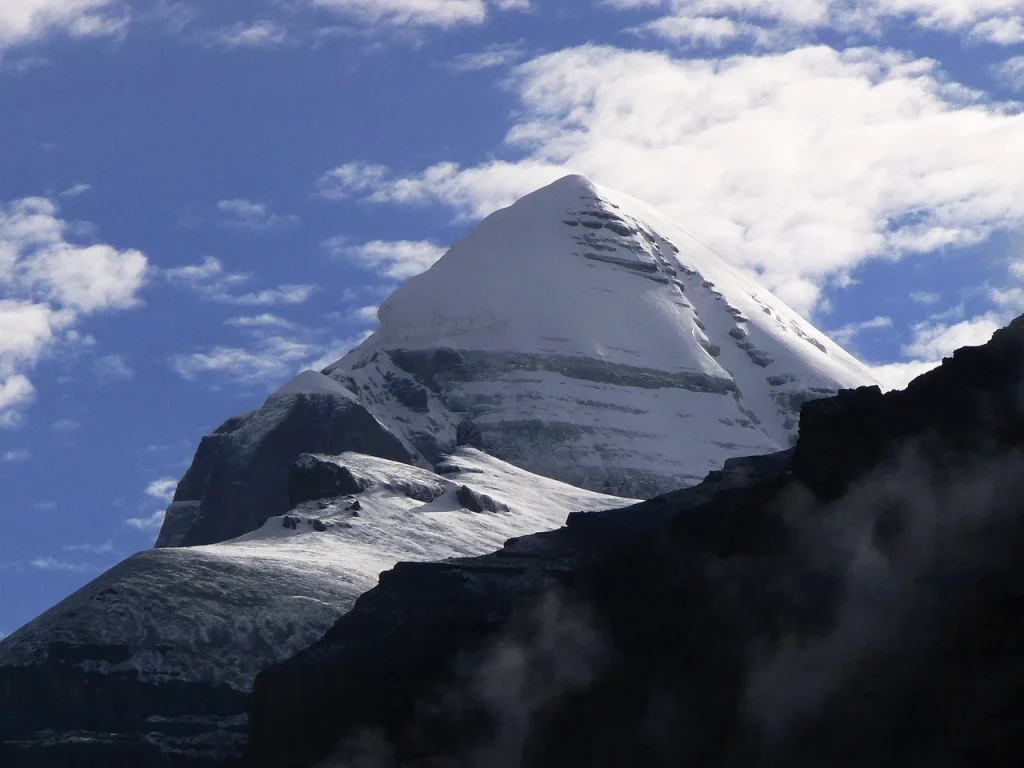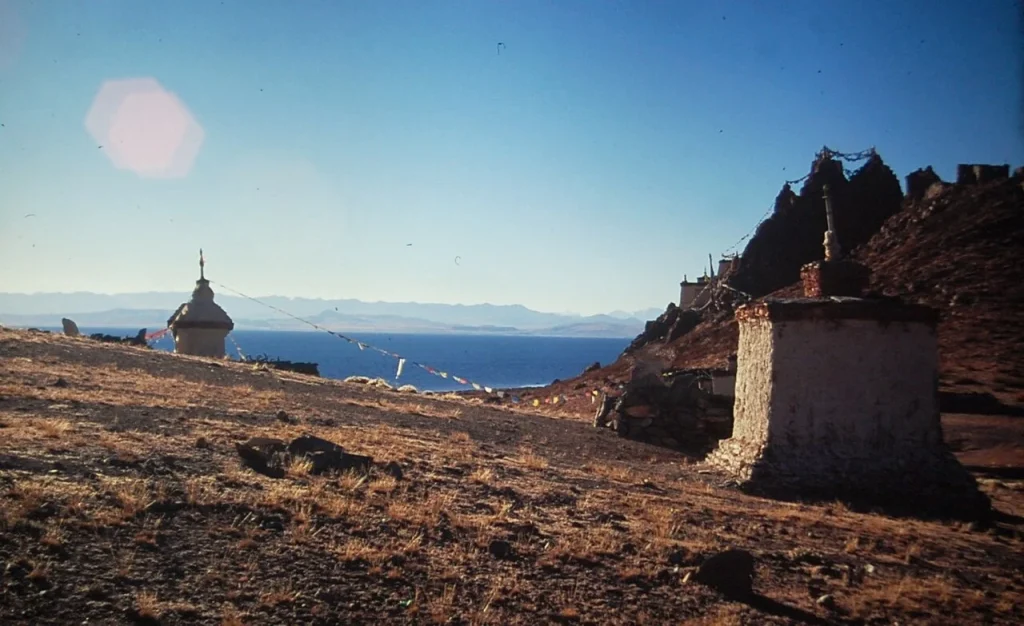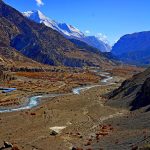Kailash Parbat: The Sacred Mountain of Spiritual Enlightenment and Pilgrimage
Kailash Parbat, also known as Mount Kailash, is a majestic peak in the remote Ngari Prefecture of Tibet, China. Towering at 6,638 meters (21,778 feet), this sacred mountain is revered across multiple religions, including Hinduism, Buddhism, Jainism, and Bon.
Its striking pyramid-like shape, isolated location in the Transhimalaya range, and profound spiritual significance make it a global symbol of divine energy and cosmic connection.
Often called the “Axis Mundi,” Kailash Parbat is believed to be the center of the universe, a place where heaven and earth converge. This comprehensive article explores the mountain’s history, spiritual importance, pilgrimage routes, cultural significance, environmental considerations, and practical travel advice for those seeking to experience its transformative power.

The Historical and Spiritual Significance of Kailash Parbat
Kailash Parbat’s sanctity transcends religious boundaries, making it a unique spiritual landmark. Its history is steeped in ancient texts, oral traditions, and mystical legends that have shaped its identity as a sacred site for millennia.
Kailash in Hinduism
In Hinduism, Kailash Parbat is revered as the eternal abode of Lord Shiva, one of the principal deities in the Hindu trinity. According to mythology, Shiva resides atop the mountain in a state of perpetual meditation alongside his consort, Parvati.
The mountain is also associated with Mount Meru, the mythical cosmic axis in Hindu cosmology that connects the physical and spiritual realms. Ancient texts like the Puranas describe Kailash as a place of immense spiritual power, where devotees can attain liberation (moksha) by merely gazing upon it or circumambulating its base.
The Kailash Mansarovar Yatra, a pilgrimage to the mountain and nearby Lake Mansarovar, is considered one of the holiest journeys in Hinduism. Devotees believe that completing the yatra cleanses sins, purifies the soul, and brings one closer to divine enlightenment.
The mountain’s four faces, each aligned with a cardinal direction, are said to be made of precious materials—crystal, ruby, gold, and lapis lazuli—symbolizing its celestial nature.

Kailash in Buddhism
For Buddhists, Kailash Parbat is known as Kang Rinpoche, or “Precious Jewel of Snow.” It is a sacred site associated with Demchok (Chakrasamvara), a deity representing supreme bliss and enlightenment. The mountain holds particular significance in Tibetan Buddhism, where it is seen as a mandala, a spiritual map of the universe.
The legendary Buddhist poet and yogi Milarepa is said to have meditated in caves around Kailash, engaging in spiritual battles with Bon practitioners to establish Buddhist dominance in the region. His legacy endures in sites like the Milarepa Cave near Zutulpuk Monastery.
Buddhist pilgrims undertake the Kailash Kora (circumambulation) to accumulate merit and progress toward nirvana. The mountain’s rugged terrain and high altitude are seen as tests of physical and mental endurance, mirroring the spiritual challenges of the path to enlightenment.

Kailash in Jainism
In Jainism, Kailash Parbat is known as Ashtapada, the site where Rishabhadeva, the first Tirthankara, attained nirvana. Jain texts describe the mountain as a place of profound spiritual liberation, where the soul transcends worldly attachments. The reverence for Kailash among Jains highlights its universal appeal as a site of divine realization, uniting followers of different faiths in their quest for truth.
Kailash in Bon Tradition
The Bon religion, an ancient spiritual tradition indigenous to Tibet, regards Kailash as the “Nine–Stacked Swastika Mountain,” the seat of spiritual power and the home of the sky goddess Sipaimen. Bon followers circumambulate the mountain counterclockwise, in contrast to the clockwise direction preferred by Hindus and Buddhists. For Bon practitioners, Kailash is a source of mystical energy and a place to connect with ancestral spirits and deities.
This multi-religious significance underscores Kailash Parbat’s role as a unifying spiritual beacon, drawing pilgrims from diverse backgrounds to its sacred slopes.
The Kailash Mansarovar Yatra: A Transformative Pilgrimage
The Kailash Mansarovar Yatra is one of the most revered and challenging pilgrimages in the world. It involves a journey to circumambulate Kailash Parbat (the Kailash Parikrama or Kora) and visit Lake Mansarovar, a sacred freshwater lake believed to have purifying properties.
The yatra is both a physical and spiritual odyssey, testing pilgrims’ resilience while offering profound opportunities for introspection and divine connection.
The Kailash Parikrama
The Kailash Parikrama is a 52-kilometer trek around the base of the mountain, typically completed in three days. Pilgrims walk through rugged terrain, high altitudes, and unpredictable weather, passing breathtaking landscapes and sacred sites.
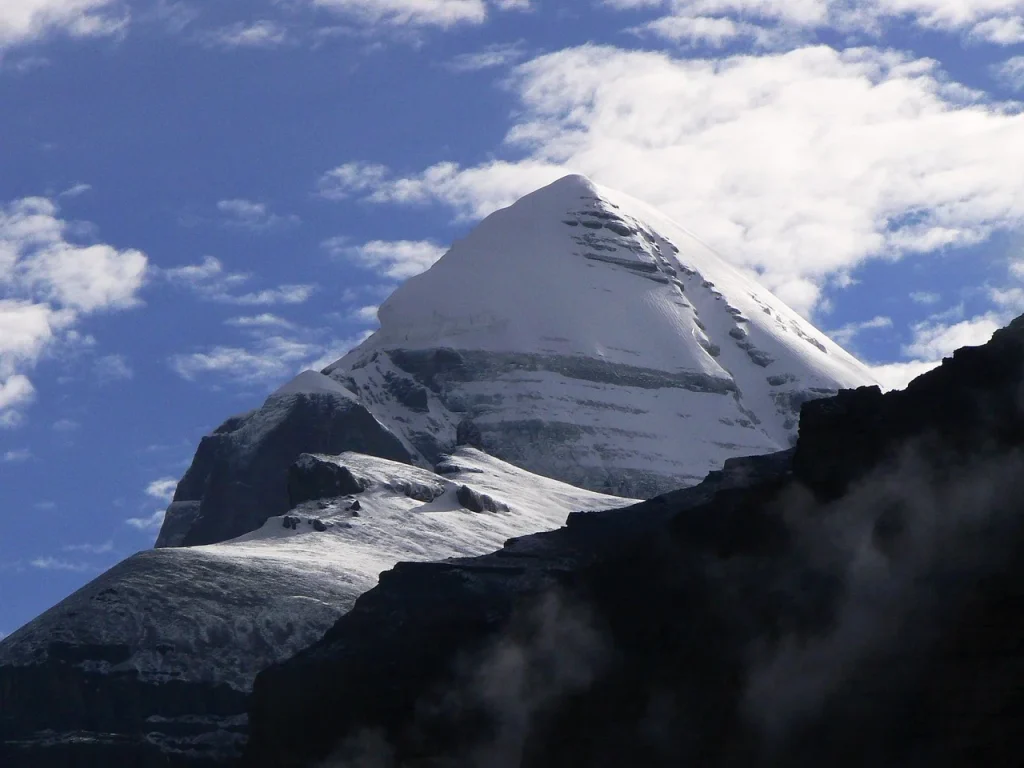
The parikrama is undertaken clockwise by Hindus and Buddhists and counterclockwise by Bon followers, reflecting their respective spiritual traditions.
Key stops along the parikrama include:
- Darchen: The starting point of the trek, a small village at 4,670 meters that serves as a base for pilgrims. Darchen offers basic accommodations and supplies.
- Yama Dwar (Gateway of Death): A symbolic gate marking the beginning of the parikrama, where pilgrims leave behind worldly attachments and embark on a spiritual rebirth.
- Dirapuk Monastery: Located at 4,900 meters, this monastery offers stunning views of Kailash’s north face, considered the most sacred perspective of the mountain.
- Dolma La Pass: The highest point of the trek at 5,630 meters, Dolma La is a challenging ascent symbolizing the overcoming of obstacles and the attainment of spiritual renewal. Pilgrims leave offerings and prayer flags at the pass.
- Zutulpuk Monastery: Associated with Milarepa’s meditation cave, this site is a place of reflection and rest before completing the parikrama.
The parikrama is a deeply personal journey, with pilgrims chanting mantras, meditating, and contemplating life’s purpose. The physical challenges of altitude, cold, and fatigue are seen as opportunities to transcend material concerns and connect with the divine.
Lake Mansarovar and Lake Rakshastal
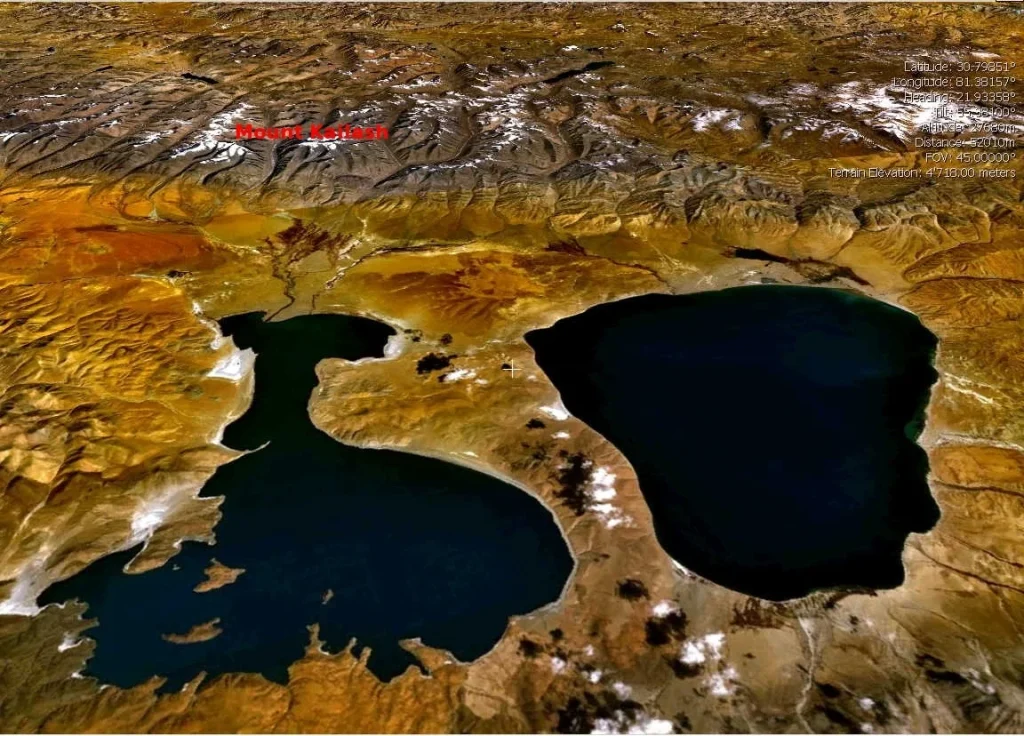
Located at 4,590 meters, Lake Mansarovar is one of the highest freshwater lakes in the world and a key component of the Kailash Mansarovar Yatra. According to Hindu mythology, the lake was created by Lord Brahma, and its waters are believed to cleanse sins and grant spiritual purification. Pilgrims take a dip in the lake’s icy waters, perform rituals, and collect water to bring home as a sacred blessing.
Nearby, Lake Rakshastal, known as the “Demon Lake,” contrasts with Mansarovar’s serene beauty. According to legend, Ravana, the demon king from the Ramayana, performed penance here to gain Shiva’s favor. The juxtaposition of the two lakes—Mansarovar’s purity and Rakshastal’s intensity—symbolizes the duality of creation and destruction.
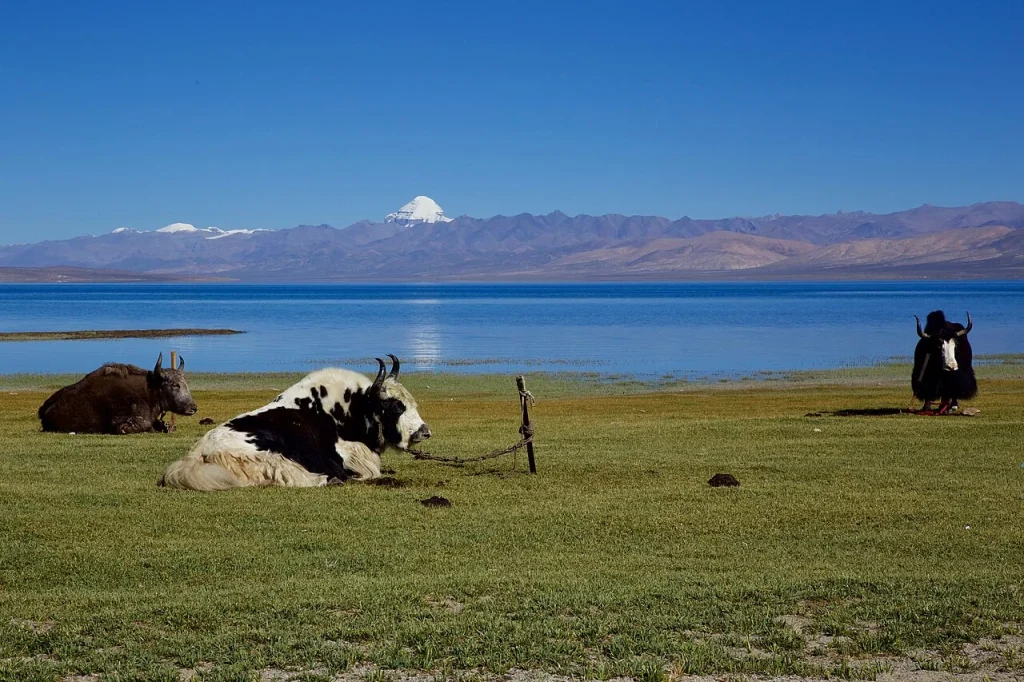
Cultural and Environmental Significance
Kailash Parbat is not only a spiritual landmark but also a cultural and environmental treasure. The region is home to the Tibetan people, whose traditions, hospitality, and resilience enrich the pilgrimage experience. Pilgrims are encouraged to respect local customs, such as offering khatas (ceremonial scarves) and avoiding sensitive topics related to Tibetan autonomy.
The Kailash region is a fragile ecosystem, with unique flora and fauna adapted to high–altitude conditions. Pilgrims and travelers must minimize their environmental impact by avoiding single–use plastics, disposing of waste responsibly, and respecting wildlife. Initiatives by local authorities and tour operators aim to preserve the pristine beauty of Kailash and its surroundings for future generations.
Planning Your Kailash Parbat Pilgrimage
Visiting Kailash Parbat requires meticulous planning due to its remote location, high altitude, and geopolitical complexities. Here’s a detailed guide to help you prepare:
Best Time to Visit
The optimal time for the Kailash Mansarovar Yatra is from May to September, when weather conditions are relatively stable. Early summer (May-June) offers clear skies and moderate temperatures, while late summer (August-September) provides lush landscapes after the monsoon. Winter months are harsh, with heavy snowfall making the region inaccessible.
Permits and Travel Requirements
Traveling to Kailash Parbat requires a Chinese visa and a special permit for Tibet, as the region is under Chinese administration. Indian pilgrims can join government–organized yatras through the Ministry of External Affairs, which facilitates permits, logistics, and medical support.
Private tour operators offer guided tours for international travelers, ensuring safety and comfort. It’s advisable to book through reputable agencies with experience in high-altitude treks.
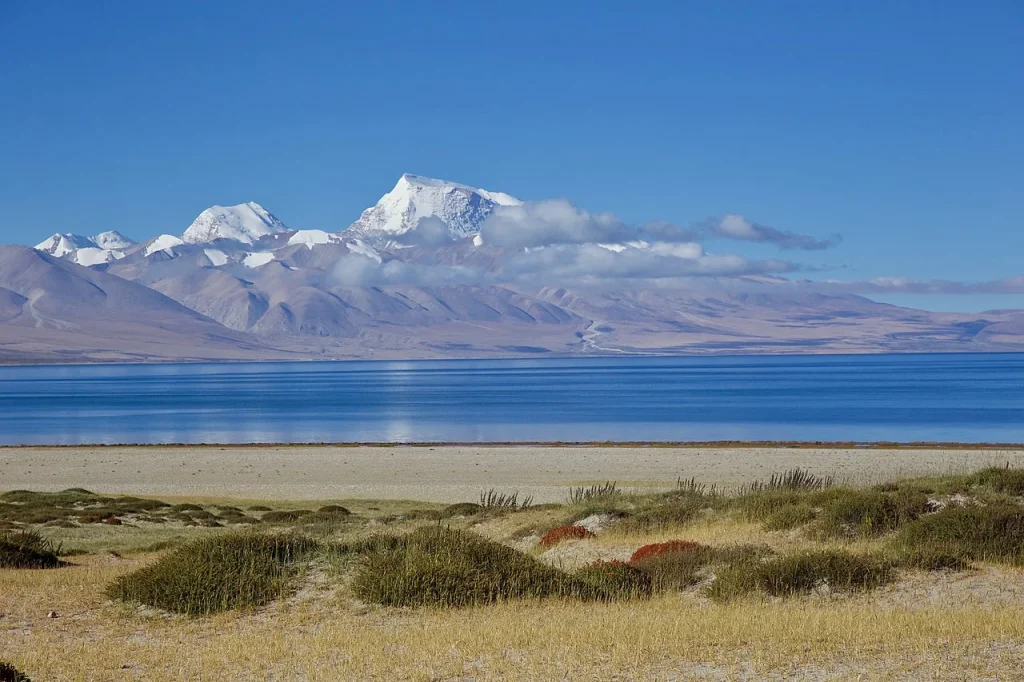
Physical and Mental Preparation
The Kailash Parikrama involves walking at altitudes above 4,500 meters, where oxygen levels are low, and temperatures can drop below freezing. Physical preparation is essential, including cardio exercises, strength training, and breathing techniques to improve endurance.
Consult a doctor, especially if you have pre-existing conditions like heart or respiratory issues. Acclimatization is critical, so plan to spend a few days at intermediate altitudes before starting the trek.
Mental preparation is equally important. Meditation, yoga, and spiritual study can help pilgrims cultivate the resilience and focus needed for the journey. Reading sacred texts like the Shiva Purana or Buddhist sutras can deepen your understanding of the pilgrimage’s significance.
What to Pack
Pack for extreme weather and rugged terrain. Essential items include:
- Warm, layered clothing (thermal wear, fleece jackets, waterproof outer layers)
- Sturdy trekking boots with a good grip
- A high-quality sleeping bag and tent for camping
- A first-aid kit with altitude sickness medication (consult a doctor)
- High SPF sunscreen, lip balm, and sunglasses to protect against UV rays
- A reusable water bottle and water purification tablets
- High-energy snacks like nuts, dried fruits, and energy bars
- A headlamp, batteries, and a multi–tool for emergencies
Travel Routes
Most pilgrims access Kailash Parbat via Kathmandu, Nepal, or Lhasa, China. From Kathmandu, the route involves a drive to the Tibet border at Kerung, followed by a journey through the Tibetan plateau to Darchen. From Lhasa, travelers fly or drive to Ngari, then proceed to Darchen. Both routes offer stunning views of the Himalayas but require several days of travel due to the region’s remoteness.
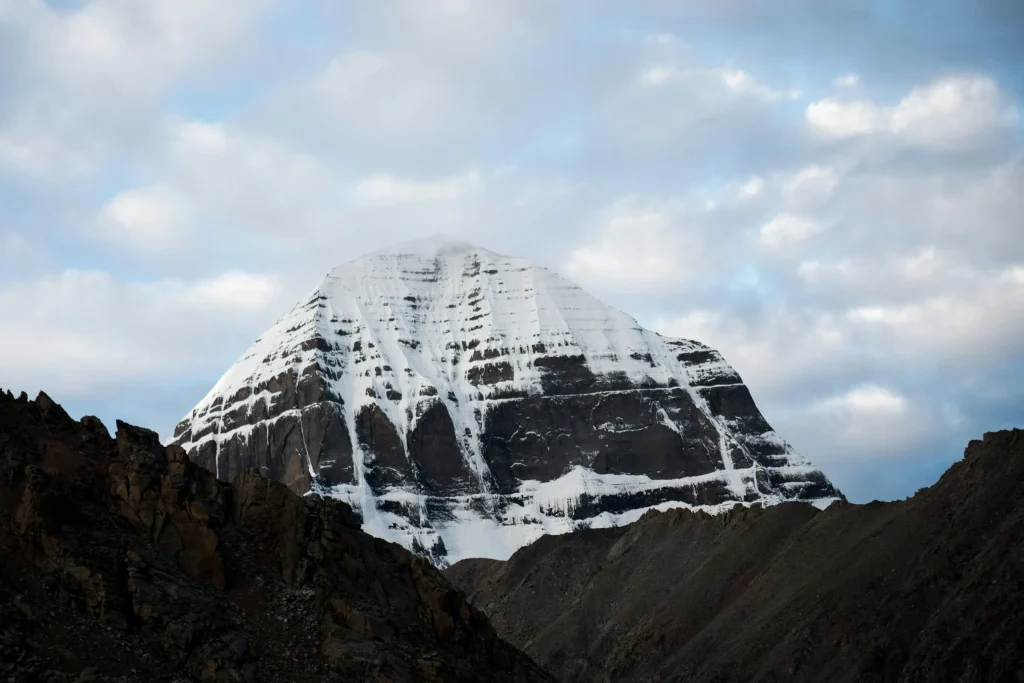
Challenges and Rewards of the Pilgrimage
The Kailash Mansarovar Yatra is not without challenges. Altitude sickness, extreme weather, and physical exhaustion test even the most prepared pilgrims. Geopolitical tensions in the region can also lead to sudden changes in travel regulations, requiring flexibility and patience.
However, the rewards are profound. Pilgrims often describe a sense of inner peace, spiritual renewal, and connection to the divine that transcends the hardships of the journey.
The breathtaking beauty of Kailash Parbat—its snow-capped peak, rugged valleys, and serene lakes—leaves an indelible mark on visitors. The camaraderie among pilgrims, the warmth of Tibetan locals, and the shared sense of purpose create lasting memories and bonds.

Conclusion
Kailash Parbat is more than a mountain; it is a spiritual sanctuary that has inspired devotion, awe, and transformation for centuries. Its universal significance, uniting Hindus, Buddhists, Jains, and Bon followers, reflects the timeless human quest for meaning and connection.
Whether you undertake the Kailash Mansarovar Yatra or explore its mystique from afar, Kailash Parbat offers a glimpse into the divine, a reminder of the sacredness of life and the universe.
For those planning the pilgrimage, thorough preparation, respect for local culture, and environmental consciousness are key to a fulfilling experience. As you stand before the majestic Kailash Parbat, you may find that the journey to its slopes is also a journey within—a path to self–discovery and spiritual awakening.

